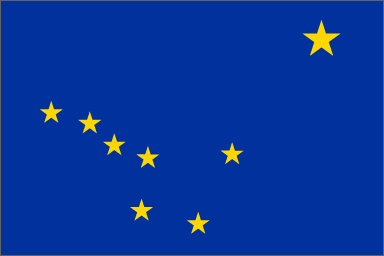

 The Accurate Reloading Forums
The Accurate Reloading Forums  THE ACCURATE RELOADING.COM FORUMS
THE ACCURATE RELOADING.COM FORUMS  Hunting
Hunting  Alaska Hunting Forum
Alaska Hunting Forum  Older Alaska Wolf Experiment
Older Alaska Wolf ExperimentGo  | New  | Find  | Notify  | Tools  | Reply  |  |
| one of us |
I thought this was in interesting read: _______________________________________ When Biologists Stocked Alaska with Wolves February 5, 2004 By Ned Rozell The killing of wolves to boost moose and caribou populations in Alaska is making headlines all over the country. Back in 1960, a government program to stock an Alaska island with wolves received less attention. Alaska had been a state for one year when its department of fish and game conducted a wolf-planting experiment on Coronation Island in southeast Alaska. At the time, the remote 45-square-mile island exposed to the open Pacific had a high density of blacktailed deer and no wolves. In 1960, biologists from Fish and Game released two pairs of wolves on the island. The experiment was the only wolf-stocking effort undertaken in Alaska and probably the whole world at that time, said Dave Klein, a professor emeritus with the University of Alaska’s Institute of Arctic Biology. Klein, who had studied deer on the island for his PhD thesis, helped the state make the decision to introduce wolves to Coronation Island. “Alaska had just become a state and you had a brand new department of fish and game staffed with young biologists who wanted to do things based on biology rather than a mix of politics and science. It'd be much more difficult to do it now.†In 1960, Fish and Game biologists released two male and two female wolves at Egg Harbor on Coronation Island. Before they left, the researchers shot five deer to provide food for the wolves. Biologist Paul Garceau visited the island in May 1961 and found tracks, deer remains, and wolf scat containing deer hair and bones, showing that the wolves had adapted to life on the island. Two months later, a commercial fisherman shot the two adult female wolves, but Garceau saw tracks of wolf pups on the island when he returned later that summer. The females had given birth before they died, and the pups had survived. In 1964, Alaska Department of Fish and Game biologist Harry Merriam explored the island for eight days and saw 11 adult wolves and the tracks of two pups. He estimated that at least 13 wolves lived on the island and three litters of young had been born since the first wolves arrived. The following summer, in 1965, Merriam spent 10 days on the island, seeing wolf tracks on all the beaches. He saw no sign of deer on the north side of the island, but found deer tracks on the steep slopes of the island’s south side, where rough terrain and dense brush may have provided the best chance to escape wolves. In February 1966, Merriam saw only three wolves on the island, and their tracks suggested they were the only wolves left. He examined more than 100 wolf scats; six of those contained wolf remains only, suggesting the animals had resorted to cannibalism. Deer remains in the scats were less than one half of the previous spring; fragments of birds, seals, sea creatures and small mammals constituted the rest. In August of 1966, Merriam and his partners collected seven wolf scats, compared to 201 one year before. They found just three sets of fresh deer tracks. By 1968, one wolf remained on the island. Biologists who inventoried the island’s animals in 1983 found no evidence of wolves, but the deer were once again plentiful. Alaska’s only wolf-stocking experiment taught biologists the importance of habitat size. They concluded that a 45-square mile island was too small for both deer and wolves. The study also showed that a lot of factors play into the dynamics of a wild animal population, which is a point Klein said many people miss in current arguments about wolf control. “The relationship between wolves and their prey is very complex,†he said. “Sometimes wolves are the key predators of caribou or moose, sometimes bears. Sometimes severe weather is the main factor, sometimes food availability. “The main problem with these kinds of controversies is people are unwilling to look at the complexity of the ecosystems involved. Things are not simple in nature.†| ||
|
one of us |
Well I think that's just plain interesting. Plus, I'm cancelling my wolf hunt plans on Coronation. Brian | |||
|
| Powered by Social Strata |
| Please Wait. Your request is being processed... |
|
 The Accurate Reloading Forums
The Accurate Reloading Forums  THE ACCURATE RELOADING.COM FORUMS
THE ACCURATE RELOADING.COM FORUMS  Hunting
Hunting  Alaska Hunting Forum
Alaska Hunting Forum  Older Alaska Wolf Experiment
Older Alaska Wolf Experiment

Visit our on-line store for AR Memorabilia

